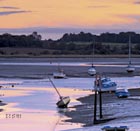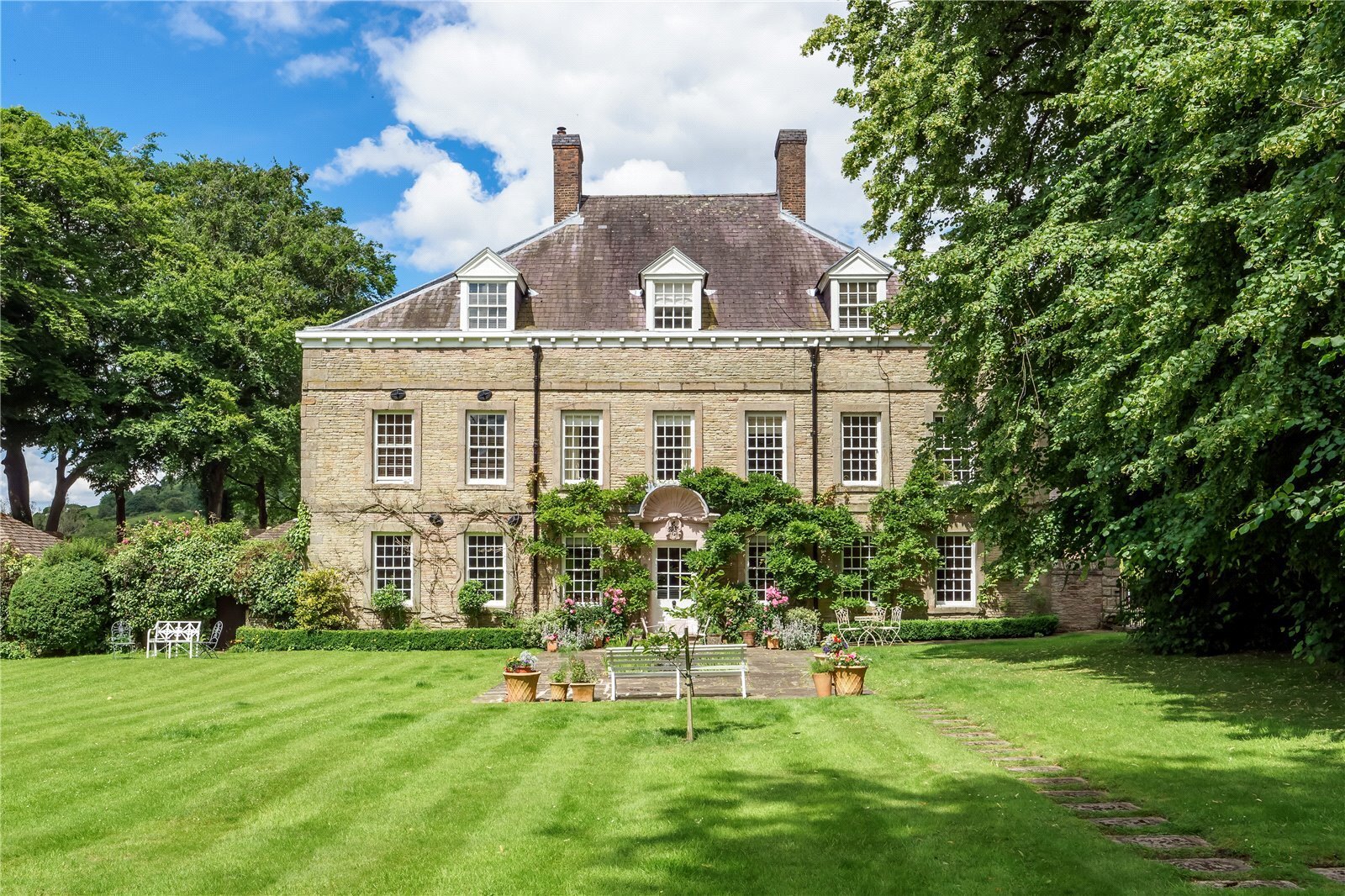The beauty of East Anglia
The East Anglian landscape should be exalted, says Tim Dee


The first thing to say is that it isn't flat. It never has been. Many others have said this, too, but still the put-down persists. ‘Very flat, Norfolk' Amanda reported in Noël Coward's Private Lives, more than 80 years ago, and many in Britain have long regarded this falsehood as a truth. Flat in these terms, we are to understand, also means boring.
Granted, there are no mountains in East Anglia and precious little exposed rock (the chalk cliff at Hunstanton tries hard and permits some fulmars a breeding ledge). True, the fens to the west, draining to the great slack-mouthed bite of The Wash (surely the last real wilderness in England), are flat, rather assertively so, and low, lower even in many places than the sea to their north. But these basic qualifications are not the end of East Anglia's story.
Nowhere nearby (and not so nearby) is lofty or rugged. The wind, the stall-holders often say in Cambridge market, blows unhindered from the Urals. It certainly feels wolfishly cold at times, but I see the North Sea counties of Essex, Suffolk and Norfolk, with Cambridgeshire their inland half-sibling, better characterised by their own particular blend of softness and exposure.
Both are qualities you can see captured in the curve of the Norfolk coast, in the porosity of the land's edge running south through Suffolk (shucking shingle and blowing sand, the drowned church at Dunwich) and in the soft skin of the indented creeks that finger the Essex shoreline (making it the longest of any county in England).
East Anglia is an unfixed place of give and take, a land in continual argument with water, a marine fetch of counties, yet each with deeply interior and almost Continental airs and all edged to the west by a soggy one-time swamp. Put this spreading stage under the always energetic and determining sky, thought by John Constable (the consummate Essex-Suffolk painter of it) to be ‘the chief organ of sentiment', and you get some better sense of the far-from-flat theatre of East Anglia.
Last winter, wild storms and super tides broke through the region's long beaches in many places and pushed saltwater deep inland. Seals were photographed swimming along the flooded A149 road on the north Norfolk coast; hides and beach shelters, which I have used repeatedly over 40 years of pilgrimage to this extraordinary gathering place for birds, were torn apart and tossed down miles away from their foundations. A new edge to our island was fashioned.
It remains to be seen how or where freshwater breeding birds will relocate come the summer, but the new saltmarshes will surely attract others. The dynamically remodelled coast is exhilarating to visit and the lesson the seasons and elements have taught us is as worth learning now as ever. There is no better teacher of this kind than East Anglia. My father spent much of his National Service filling sandbags, Canute-like, against the North Sea flood of 1953.
Exquisite houses, the beauty of Nature, and how to get the most from your life, straight to your inbox.
On his epic peregrination around Britain in the early 1700s, Daniel Defoe described a ghastly night of shipwrecking on the Norfolk coast in 1692, when 200 vessels were lost and 1,000 mariners drowned. In David Copperfield, Charles Dickens pictured a comparable and similarly heartbreaking disaster off Lowestoft. Benjamin Britten, as a Suffolk native sojourning in California, found himself ineluctably-tidally, one might say-drawn back to the wrecking sea he'd known at home. His masterpiece Peter Grimes and much brilliant sea and marsh music (is there a more evocative title than Curlew River?) was the result.
Sir Thomas Browne, the great 17th-century doctor and a strong candidate for a man who knew everything, spent most of his life in the church-crammed medieval city of Norwich. Perched there between, on one side, the soft edges of the Norfolk coast where manmade peat diggings were becoming the Broads and, on the other, the man-drained fens of Cambridgeshire, he labelled Mankind ‘that great and true Amphibium'. He was also superbly that himself, as all East Anglians must become whether native or visitor.
One of my favourite pubs is The Eel's Foot at Eastbridge, on the Suffolk coast. I'm sure Thomas Browne would have enjoyed its name as well as its beer. Inland East Anglia is something else again: hunched away from the sea, it's made under the same sky, yet often is as dry as a beached whale's bone; it feels deeply old and stuffed with stories. Small villages surround huge flint churches that look as if all the skeletons of their history have been heaved up and put on display.

The intricate yet functional field shapes of Suffolk and Essex also have much to say: Ronald Blythe's wondrous oral history Akenfield was made out of such places. North-west of there, the Brecks are as near to a desert as the British Isles can muster: sandstorms have wreaked havoc in the past. Breckland was once home to legendary rabbit warrens and great shooting estates (such as at Elveden, which was so busy that its gamekeeper wrote whole books on its bumper bags). Now firecrests, golden pheasants and goshawks, exotic and rare birds all, live in the forestry plant- ations that ring the military training area at Stanford (as secret a place as any in the country).
At neighbouring Lakenheath, beneath the banking planes returning to the nearby Air Force bases, the RSPB has made a giant reedbed from a run of carrot fields. Common cranes, a long- lost fen bird, have returned to breed. In the boxy plots of poplars there, grown originally for matchsticks, the only golden orioles that nest regularly in Britain strike up their metal-bright songs every spring.
I live now on the fen edge in a village tucked beneath the racecourse at Newmarket. The A14 piles past. But there is still no motorway in Norfolk and, although Norwich feels closer to the rest of Britain than it did just a few years ago, with, it seems, half of London taking its holidays on the East Anglian coast, the area is still far enough away from anywhere else to remain distinctively itself. Even Alan Partridge, the hapless Norfolk DJ and comic creation of Steve Coogan, testifies to this. Kent, say, wouldn't give haven to such an out-of-step twerp, whereas Norwich has long known all sorts of amphibiums.
When I first visited East Anglia as an ardent young birdwatcher, the excitement of entering such a fabled land was nearly too much for me. I almost didn't make it to my longed-for Minsmere because I insisted on stopping en route to count the miraculous abundance of game birds in every field. I didn't know then about Elveden or the hand of man that had gone so far in shaping and stocking the land.
At Minsmere, more management, part of the same conversation between sea and land and Man and Nature, had produced the Scrape-a lagoon behind the beach, which, at that time, held one of only two colonies of avocets in Britain and which was hunted over by some of the very few marsh harriers that we'd held onto. Avocets and marsh harriers are much commoner now and are part of the good news of East Anglia that has made its way right across the country.
Wherever I am these days, I can't see those birds without thinking of them as happy exports, beautiful and masterful inhabitants (and expressions, therefore) of those sometimes derided flat and marshy places and proof positive that the landscape of East Anglia, its skyways and its occupants, is anything but boring.
A recent exhibition at the Sainsbury Centre for Visual Arts in Norwich was called ‘Masterpieces: Art and East Anglia' and had extraordinary riches on show. No less marvellous, no less of a masterpiece, is the intricate co-evolved countryside that runs to all points from Norwich, the patterned land and the shifting shore, the running skies overhead and always-and never far away-the silver spread of water. Tim Dee is the author of ‘Four Fields' and the co-editor of ‘The Poetry of Birds'. He is writing a book about the spring.
* Follow Country Life on Twitter
Country Life is unlike any other magazine: the only glossy weekly on the newsstand and the only magazine that has been guest-edited by His Majesty The King not once, but twice. It is a celebration of modern rural life and all its diverse joys and pleasures — that was first published in Queen Victoria's Diamond Jubilee year. Our eclectic mixture of witty and informative content — from the most up-to-date property news and commentary and a coveted glimpse inside some of the UK's best houses and gardens, to gardening, the arts and interior design, written by experts in their field — still cannot be found in print or online, anywhere else.
-
 Can you buy happiness? The latest list of Britain's happiest places, and what you could end up with if you moved there
Can you buy happiness? The latest list of Britain's happiest places, and what you could end up with if you moved thereCan you buy happiness? Of course not, but you can buy a nicer house in a better town... and, well, that's probably going to help quite a bit.
-
 Is the British Museum's attempt to save a Tudor-era pendant with links to Henry VIII proof that the institution is on the up?
Is the British Museum's attempt to save a Tudor-era pendant with links to Henry VIII proof that the institution is on the up?After years of neglect and controversy, Britain's premier cultural institution seems to be finding its feet again.
